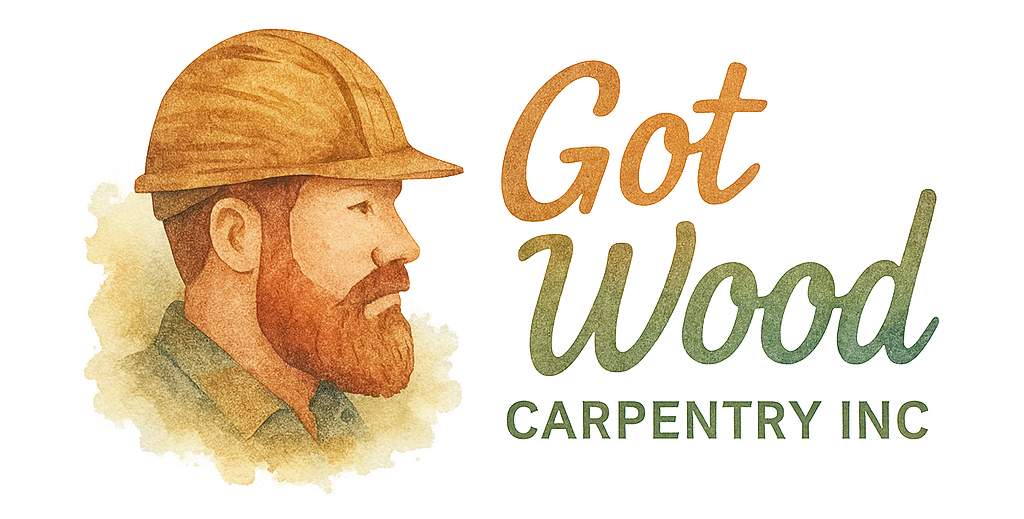Carpentry is an intricate craft that blends creativity, skill, and technical knowledge. Whether you’re a professional carpenter, an aspiring DIYer, or someone just interested in woodworking, there are essential terms and phrases every carpentry enthusiast should familiarize themselves with. In this article, we’ll explore 12 crucial carpentry terms that will elevate your understanding of the craft.
1. The Importance of Carpentry Terminology
To truly appreciate carpentry, one must first understand the terms associated with the craft. Mastering the terminology ensures clearer communication, better planning, and a higher level of craftsmanship. In this article, we’ll break down these terms for you, focusing on foundational aspects of carpentry and offering insights into how they apply to various projects.
2. What is Carpentry?
Carpentry refers to the skilled trade of working with wood to construct, install, and repair structures and fixtures. This term is broad and can involve everything from framing homes to creating custom furniture. For more information on custom carpentry, visit Got Wood Carpentry’s Custom Furniture page.
3. Lumber: The Backbone of Carpentry
Lumber is the primary material used in carpentry. It refers to wood that has been processed for use in construction, furniture-making, and other carpentry applications. Understanding the different types of lumber, like hardwood and softwood, is crucial for selecting the right material for your project.
Learn more about various woodworking tips and techniques to ensure you use the correct lumber for your needs.
4. Sawdust: More Than Just a Mess
Sawdust is the fine powder left behind after wood is cut, drilled, or sanded. While often considered a byproduct of woodworking, sawdust can be used for other purposes like composting, as animal bedding, or even in crafting decorative items. Knowing how to manage and recycle sawdust is an important skill in any carpenter’s toolkit.
5. Joints: How Carpentry Comes Together
A joint refers to the point where two pieces of wood are connected. Joints are crucial in carpentry as they help form the structure and shape of the final product. Some common joint types include butt joints, dovetail joints, and mortise-and-tenon joints. If you’re just starting out, learning basic beginner carpentry tips can help you master these essential skills.
For more information on specific carpentry techniques, explore our residential carpentry services.

6. Framing: The Skeleton of Construction
Framing is the process of building the structural framework of a building. This is often the first step in large-scale projects such as residential homes or commercial structures. The framework includes beams, studs, and joists, which create the essential support system for the building.
If you’re looking for inspiration, check out our page on decking and outdoor structures for ideas on building frames for outdoor spaces.
7. Miter: The Precision Cut
A miter is a type of joint created by cutting two pieces of wood at an angle, often 45 degrees, to create a neat corner. Miters are commonly used in molding, picture frames, and trim work. If you want to learn more about how to use a miter saw, visit our page on commercial carpentry.
8. Planing: Smoothing the Surface
Planing refers to the process of smoothing rough wood surfaces using a tool called a planer. This process is essential in creating a finished look for any project, from furniture to floors. It’s crucial for achieving the smooth, polished look that makes carpentry work stand out.
9. Chisels: Shaping Wood by Hand
A chisel is a tool used to carve or shape wood, especially when finer, more detailed work is required. Carpenters use chisels for everything from hollowing out wood to making precise cuts. Whether you’re into DIY projects or you’re looking for advanced carpentry work, you’ll need to know the right types of chisels to use.
Check out our woodworking education page for more information on using chisels effectively.
10. Joinery: The Art of Connecting Wood
Joinery is the technique of joining two or more pieces of wood together in a stable and durable way. Different forms of joinery require different skills, tools, and techniques. Knowing the various types of joinery, such as dovetail, box, and butt joints, is essential for any serious carpenter.
If you’re looking to master these techniques, visit Got Wood Carpentry’s Commercial Carpentry page.
11. Woodworking Errors: How to Avoid Common Mistakes
No matter how skilled a carpenter is, woodworking errors can happen. These errors might include uneven cuts, warped boards, or misaligned joints. Knowing how to avoid these common mistakes is key to producing high-quality work. Understanding the tools and processes involved can significantly reduce errors.
For tips on preventing these mistakes, visit our guide on woodworking errors.
12. Carpentry Tools: The Essential Toolkit
A carpenter’s toolkit is filled with a variety of specialized tools. These include hammers, saws, drills, levels, and measuring tapes, each of which plays a crucial role in a carpenter’s daily tasks. Having the right tools for each job ensures efficiency and precision.
If you’re just starting, learn more about essential tools for carpentry by checking out our beginner carpentry tips.
Conclusion: Mastering Carpentry Terminology
Understanding these 12 terms is a great starting point for anyone interested in carpentry. Whether you are just getting started or are honing your craft, mastering the language of carpentry is crucial for success. As you expand your knowledge, you’ll find that these terms will become second nature, allowing you to tackle more complex projects with ease.
For more resources, consider exploring our collection of backyard ideas or checking out our luxury carpentry services. As you grow as a carpenter, remember that every project brings an opportunity to learn and improve. Happy woodworking!
FAQs
- What is the difference between hardwood and softwood?
- Hardwood comes from deciduous trees and is typically denser and stronger, while softwood comes from coniferous trees and is generally lighter and easier to work with.
- What type of wood is best for outdoor carpentry?
- Cedar and redwood are excellent choices for outdoor carpentry because they resist moisture and insects. For more outdoor ideas, visit Got Wood’s outdoor carpentry services.
- How do I prevent woodworking errors?
- Precision is key. Make sure to measure twice, use quality tools, and practice techniques before starting your project. Learn more about common woodworking errors.
- How can I get started with custom furniture?
- Custom furniture requires an understanding of joints, planing, and design. Start small with DIY projects and gradually work up to more complex pieces. Visit our custom furniture page for ideas.
- What are some common carpentry tools every beginner needs?
- A saw, hammer, measuring tape, square, and level are essential. Check out our beginner carpentry tips for more.
- How can I improve my carpentry skills?
- Practice, patience, and learning new techniques through guides or classes can help improve your carpentry skills. Explore our woodworking education section for more tips.
- Can carpentry be a profitable business?
- Yes, carpentry can be a very profitable business, especially if you specialize in areas like custom furniture or residential carpentry. Learn more about starting your carpentry business with Got Wood Carpentry’s residential carpentry services.


